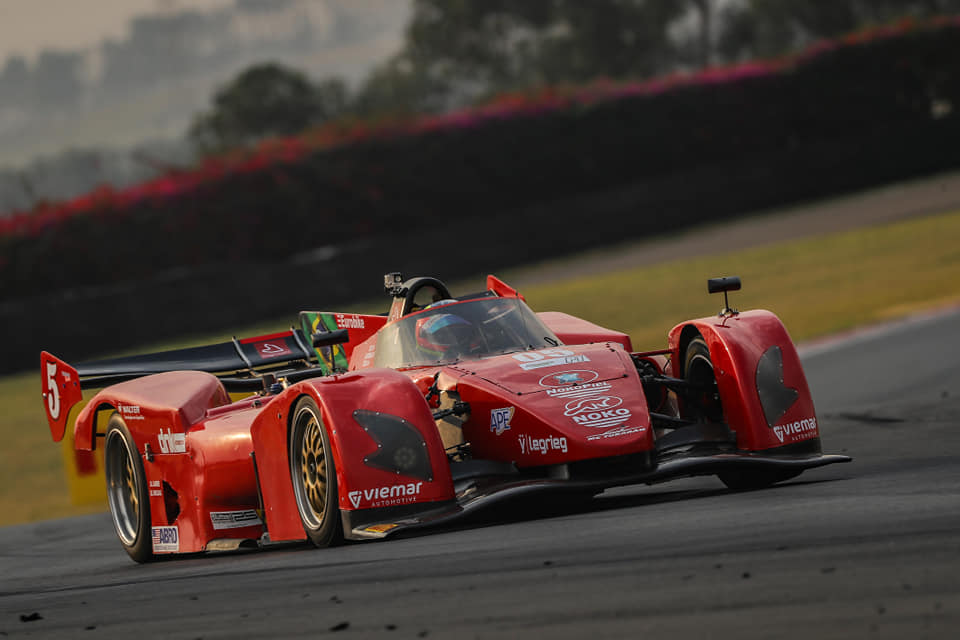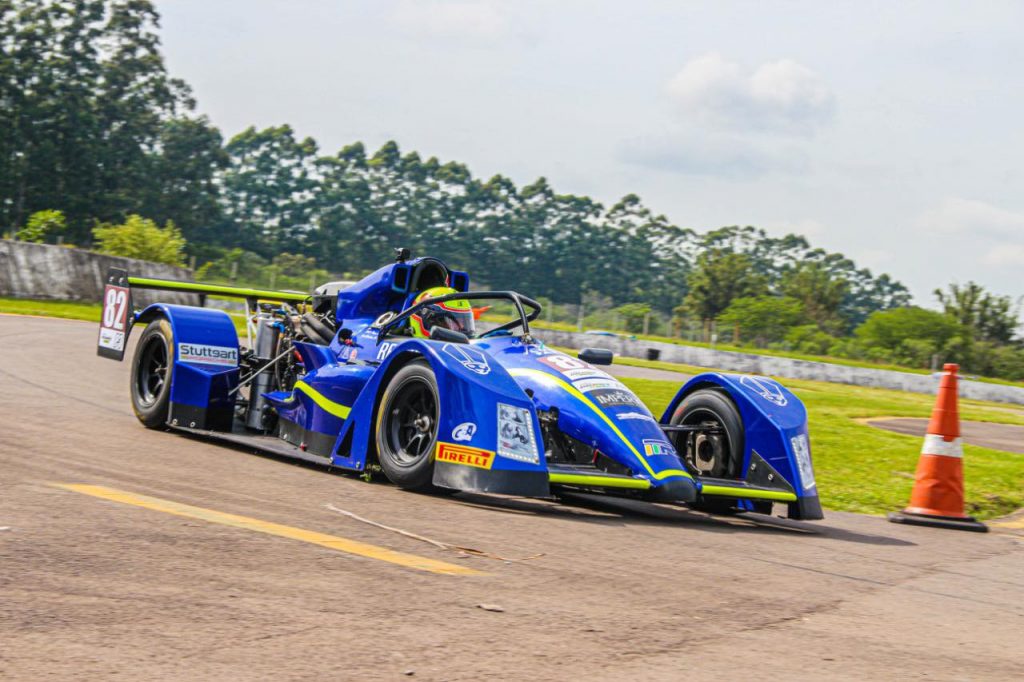The year of 2022 brought a flurry of activity among Brazilian racing car teams and manufacturers, with several new prototypes debuting in national and regional competitions. One of the biggest debuts was the Mamba Negra 2S prototype, a car we introduced at the end of 2021 and which we’ll revisit in greater detail today.
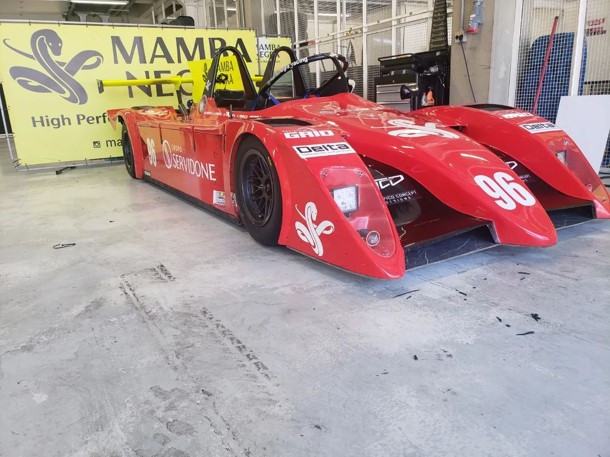
The Mamba Negra Racing team is led by businessman Marcelo Servidone, and was born with the concept of carrying out all activities in-house, including chassis, suspension and aerodynamic design, construction, assembly, engine preparation and track operation, following the same 360º concept used by the Servidone Group to meet the diverse needs of its customers.
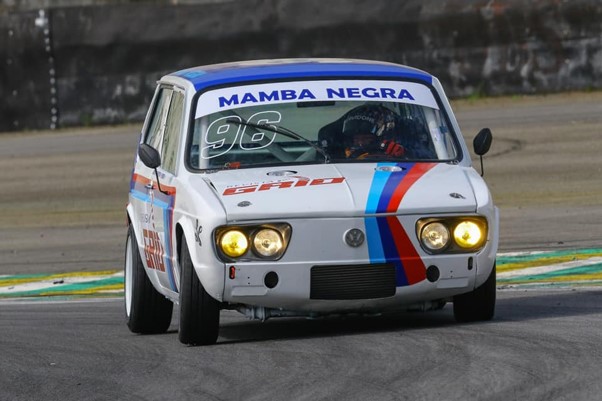
Esse conceito pôde ser visto inicialmente na Brasília utilizada pela equipe, que acumula participações em provas longas como 1.000 Milhas e 500 Quilômetros, e também em provas da Gold Classic, que teve o chassi e santantonio totalmente refeitos nas dependências da equipe.
Chassis & Powertrain
In the case of the 2S prototype, all the engineering work was developed by Macpen, a company that makes up the Servidone Group and coordinated by Eng. Cesar Servidone.
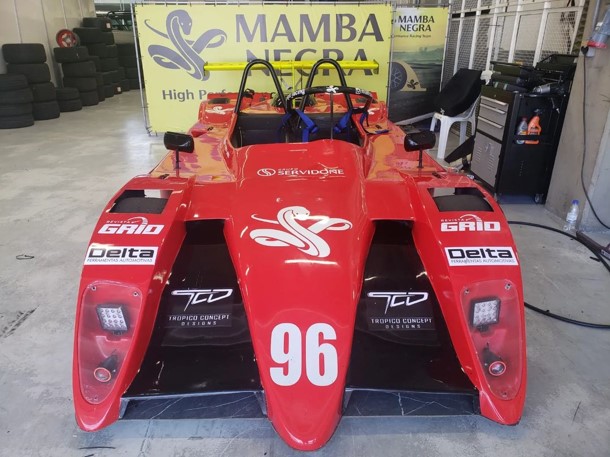
The chassis, designed in-house, is constructed of chrome-molybdenum steel and required over 800 hours of CAD and CAE engineering, seeking the best layout with a primary focus on driver safety. For example, the team opted to use the HALO in conjunction with a double roll hoop to prevent the driver from being unable to exit the vehicle if the car becomes pendulum-like after a rollover.
The tubular chassis is clad in aircraft-grade aluminum, including the floor and firewall, and features cross-laid marine plywood with three layers of fiberglass and four layers of carbon fiber. Aircraft-grade aluminum is also used in the cockpit interior trim, along with carbon fiber elements.
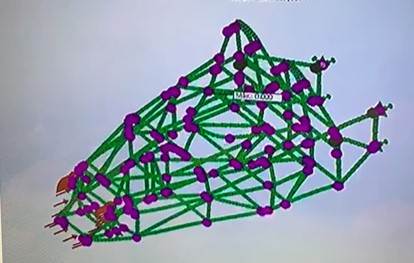
In this initial phase, the prototype uses a Volkswagen AP 2.0-liter engine with a crossflow cylinder head and dry sump, mated to a Sadev 6-speed sequential transaxle similar to that used in GT Sprint Race cars, with paddle shifters. This engine is below the chassis’ capacity but ideal for initial suspension tuning development. The brakes are Wilwood, and the prototype will soon receive new wheels from MSR Rodas.
Aerodynamics
[NOTE: This excerpt revisits the analysis from the December 19, 2021 publication, adding details that we were able to discover with new images of the car on the track].
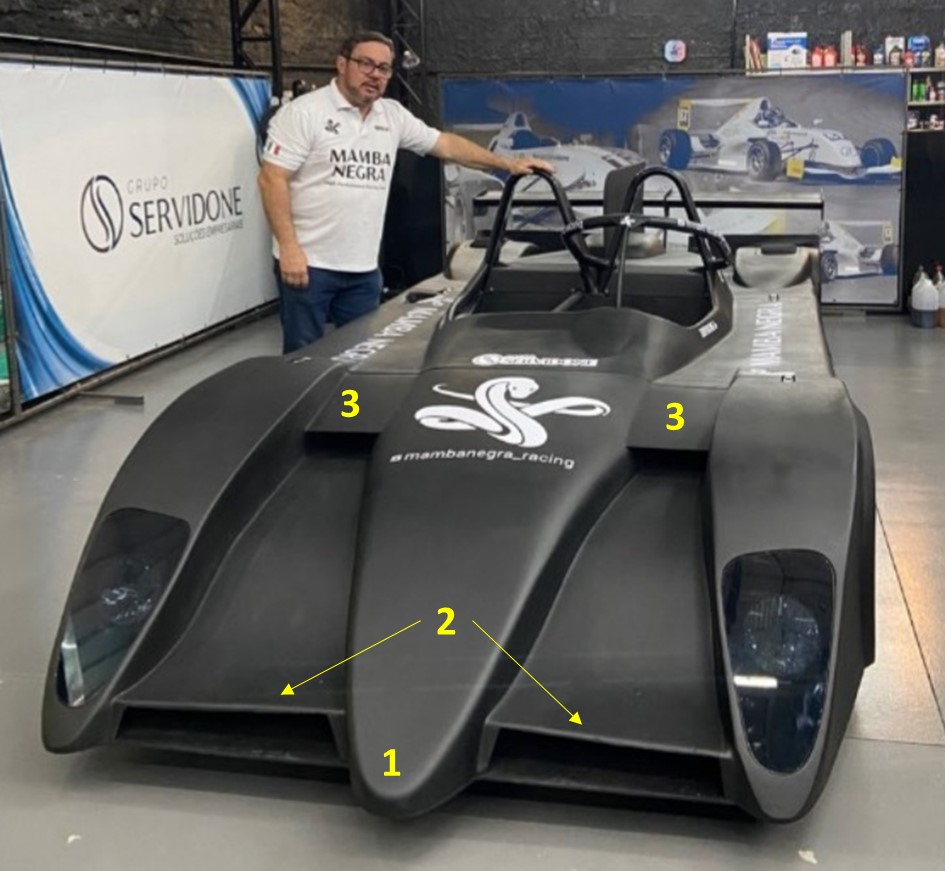
At the front of the prototype, the low nose (1) stands out, flanked by two air intakes (2) that must have the function of carrying air to the front brakes, and may also have an aerodynamic function. We can also see another pair of air intakes (3) in a higher position, which appear to be air intakes for the radiators.
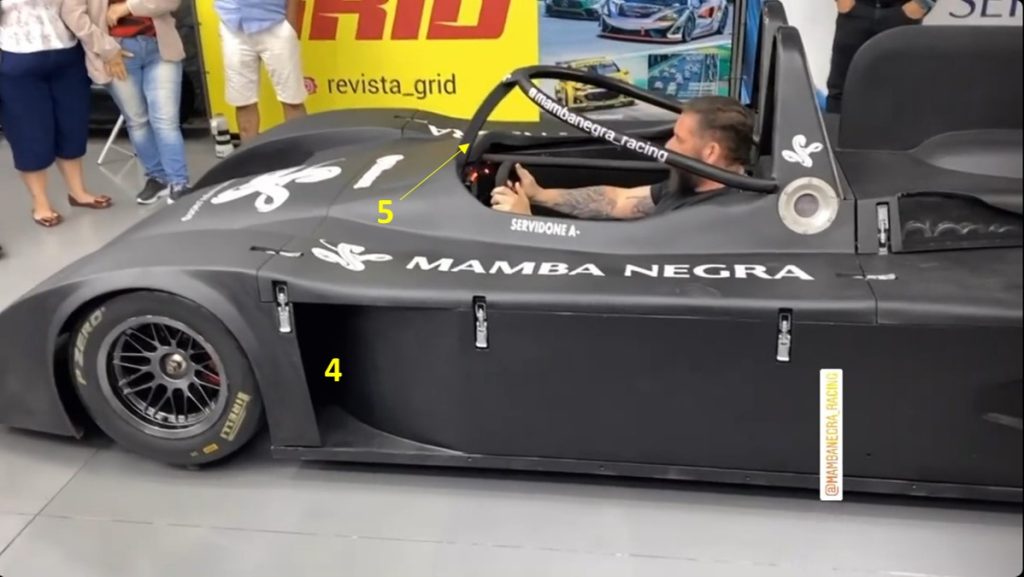
Moving on to the side, there are no openings in the upper part of the wheel arches, however the side openings (4) must fulfill the function of relieving the positive pressure generated in the wheel arches and serve as an outlet for the air admitted by the lower front intakes (2). The HALO (5) is also already present, indicating that the prototype was intended to race also in the Endurance Brasil races – something that never materialized.
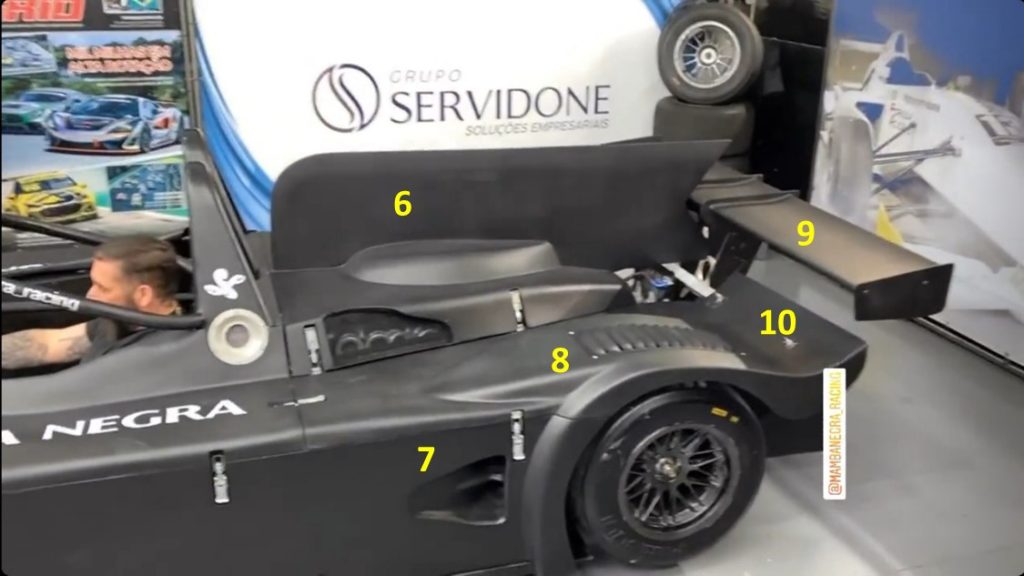
Still on the side, there is a dorsal fin (6) over the engine cover. In the lower part, there are NACA ducts (7) for the rear brake air intakes, and openings with grilles for ventilation of the rear wheel arches (8). The rear wing is in a low position, and is a single element (9), working in conjunction with a ducktail (10) on the rear deck.
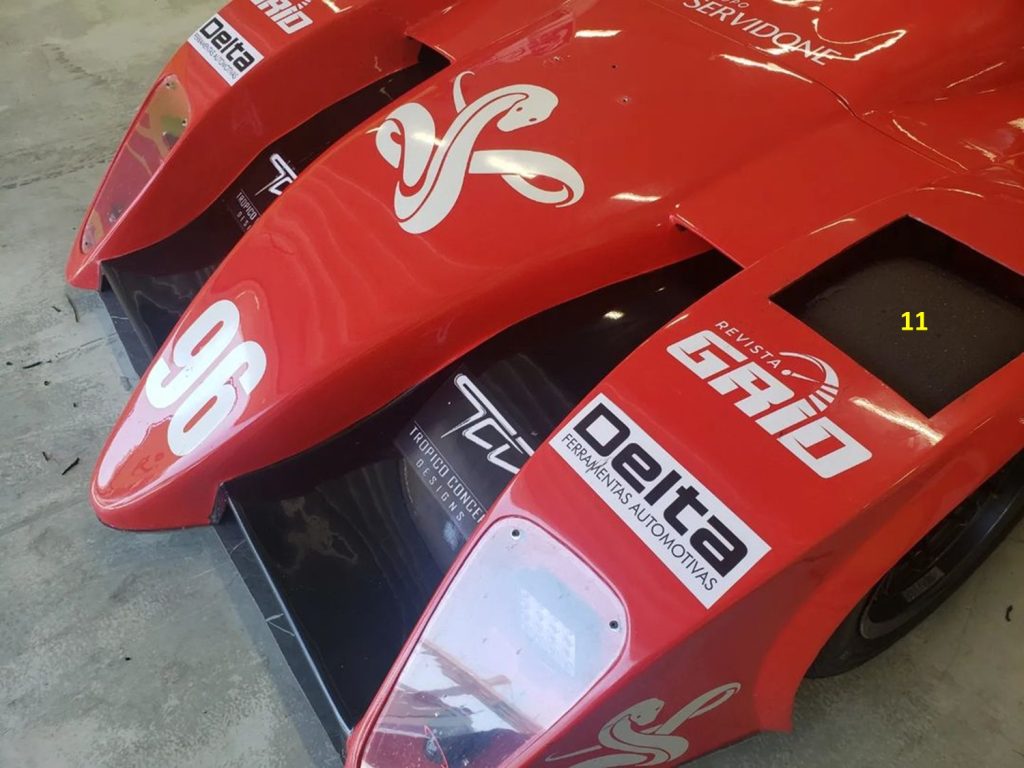
When the 2S debuted during the 1,000 Miles, it already brought some new features: the front wheel arches received ventilation openings (11), and rearview mirrors were installed (12).
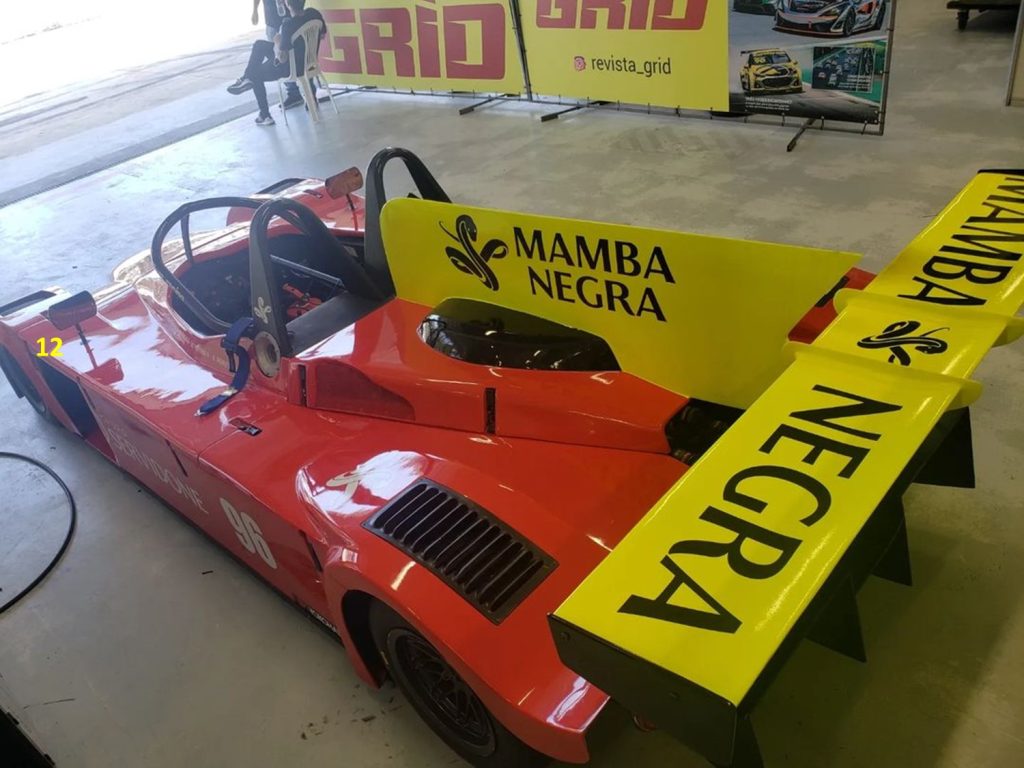
Finally, it was also possible to see the rear diffuser (13), which has two sections: a lower central section (due to the presence of the powertrain) and two lateral sections with greater expansion volume, divided by two central strakes. In addition, the rear diffuser is supported by two rods (14), which fix it to the rear section of the chassis.
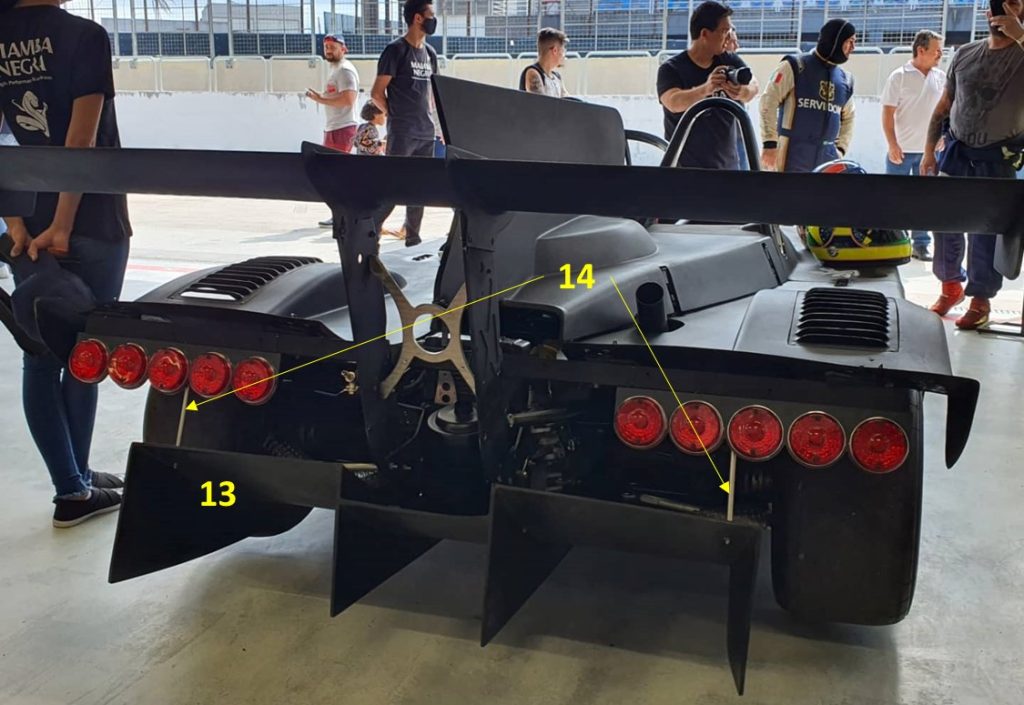
Acknowledgments
We would like to thank the Mamba Negra team and race driver Marcelo Servidone for the information they shared, which was invaluable in completing this publication.

